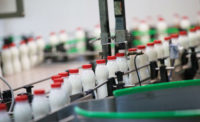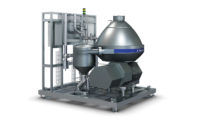Pumps are widely used within dairy processing facilities to transfer liquids, gases and slurries by mechanical action. Valves, meanwhile, control the flow of such products via opening/closing different passageways.
At least that’s the way it’s supposed to work. But maintenance-related mistakes on the part of dairy processors can wreak havoc on pump and valve operation, resulting in downtime and other expensive headaches.
Sidestep these seven maintenance mistakes
What are some of the most common mistakes dairy processors make when it comes to pump and valve maintenance? Here are seven of them, according to pump and valve vendors:
1. Not reading the vendor-supplied manual.
“All manufacturers provide an operations/service manual for a reason,” said Pelle Olsson, a sales engineer with Unibloc-Pump Inc., Marietta, Ga. “There’s a lot of valuable information in that that they may not be paying attention to.”
Without following the manual, plant employees could end up disassembling a pump incorrectly, noted Bob Garner, engineering manager of Ampco Pumps Co., Glendale, Wis. And if they don’t pay attention to the manual’s torque requirements, pump components could come loose.
“We provide maintenance videos, which are easier to digest than reading through a manual,” he added.
Assembly, too, can be an issue in the absence of a manual. For example, in pump impeller assembly, failure to work with the tolerances specified in the manual can cause “huge damage” to the impeller/lobs and/or the pump casing, said Bruce Hazewindus, managing director for Inoxpa South Africa and consultant for Inoxpa USA Inc., Santa Rosa, Calif.
2. Being too cavalier with pump/valve seals.
Randy Verges, senior applications engineer for Fristam Pumps USA, Middleton, Wis., said one of the main maintenance issues his company has seen is the use of non-
original-equipment-manufacturer (non-OEM) seals.
“I believe that often the dairy processors are unaware that they are getting replacement parts that are not original equipment manufacturer’s parts,” he said. “A supplier offers an option that may save 10 to 15%, and that makes business sense at the time.”
The problem is that some of the critical dimensions for springs, grooves and O-ring sizes might not match perfectly, he said. And that could mean processors could see seal failures — and downtime — much sooner than they would with OEM parts.
Being less than careful during seal installation also is a concern, Garner noted. Seals are fragile. If broken during installation, they will leak and also could shatter, potentially damaging pump components.
“We have the option of less-fragile seal components available,” he added.
Careful alignment also helps, Hazewindus noted.
“If the tolerances are not set correctly, you could also either have seal leakage — not enough tension — or too much tension, [which] will mean increased wear on the faces and premature failure,” he explained, adding that Inoxpa supplies mounting tools for correctly installing and fitting mechanical seals.
Derrick Alig, business development manager, hygienic pump technology, North America for Düsseldorf, Germany-based GEA Group, said another misstep occurs when processors run a pump until mechanical seal failure and move forward without regard to history.
“If a failure is properly logged, a history could be maintained for any reoccurrences,” he pointed out. “The plant can then review failures and diagnose any possible larger stemming issues.”
3. Delaying maintenance.
Too often, dairy processors put off pump and valve maintenance instead of following the recommended maintenance intervals, noted Kyle Willfahrt, product manager – process for Nelson-Jameson Inc., Marshfield, Wis.
Even worse than maintenance delays is no maintenance at all. Troy Bridges, product and marketing manager for Busch LLC, Virginia Beach, Va., noted that for some processors, pump and valve “maintenance” means fixing something when it’s already broken.
“The perpetual battle with equipment maintenance and production uptime in dairy processing is planning and allowing for downtime while still processing a product that never stops coming in the door,” Willfahrt said. “Milk needs to be treated, processed and packaged within 72 hours of being received into a processing facility. Given the time constraints, most processors will bank all of their maintenance/improvement projects into the one or two days that they are allotted per year for production downtime.”
But in trying to avoid downtime, they run the risk of actually ending up with more of it. And potentially worse, if recommended maintenance is put off for too long, the likelihood of the elastomers breaking off into the product increases, Willfahrt said, “as does the chance of metal-to-metal contact.”
One aspect of maintenance that’s commonly put off or ignored in pumps is changing the oil.
“We’ve done maintenance where water has completely displaced the oil in gear casings, usually getting in due to high-pressure washdown of breathers or seals,” said Ben VanKauwenberg, engineering manager for Green Bay, Wis.-headquartered Koss Industrial Inc.
One way dairy processors could help avoid such repercussions while minimizing maintenance-related downtime is to conduct a swap of pumps and valves that are part of a critical process, Willfahrt said.
“The largest hang-up is the initial monetary buy-in to have extra spares, but if a dairy processor can challenge [itself] to view those investments in critical spares as an opportunity cost to less downtime, then the payoff can be substantiated in a very favorable return on investment,” he said.
4. Cleaning improperly.
Mistakes made during cleaning (a critical part of maintenance) also can create issues. For example, a cleaning solution that’s too concentrated or run for too long of a time can damage elastomers, Hazewindus said.
“We’ve also been seeing more and more cases of sanitizer sitting in pump casings and causing corrosion, VanKauwenberg added. “There are options to avoid this such as water rinsing and casing drains.”
He cautions against using high-pressure hoses on components that are not designed to handle such pressure. Water could enter the gear casings.
“Guards can always be added to protect these components,” VanKauwenberg said.
5. Using the incorrect repair components.
The use of improper repair components is a pump maintenance concern, VanKauwenberg noted, especially for spacers and shims. His company recently had a pump come in with carbon steel shims instead of stainless steel. The shims had become swollen and corroded, pushing the casing into the rotors and producing major damage.
“Proper maintenance with the proper parts is so important,” he stressed. “At Koss, we inspect and test pumps to ensure they’re working at optimal efficiency. We can also provide impeller trimming and other services, as well as repairs. We have a large inventory of new service parts and also have those hard-to-find parts for older pump and valve models.”
6. Running under undesirable conditions.
Some concerns are not directly related to maintenance efforts, but they are certain to lead to major maintenance headaches. For example, VanKauwenberg said his company sees many pumps in operation that are lacking proper upstream strainers.
“Or worse yet, the housing is installed, but the filtering element itself is missing. We’ve seen serious pump damage occur from people dropping nuts, bolts, gaskets, clamps, gloves, etc. into tanks when there is no strainer to prevent these objects from flowing through and jamming up the pump,” he pointed out.
Running pumps dry is another huge issue, VanKauwenberg added.
“If pumps are not set up to run dry, the system should have sensors and controls in place to shut the pump down if it isn’t pumping fluids properly,” he stressed.
And sometimes the issue is related to the selection of the wrong equipment for the job. For example, air-operated valves need to be reliable and have a sanitary/hygienic design, noted Amit Patel, product marketing manager for ASCO, part of St. Louis-based Emerson.
“Sometimes even the most discrete valve components are overlooked, a mistake that could introduce risk during production,” Patel said. “Since air-operated valves are used throughout a dairy operation in food-contact and non-food-contact zones, you want to keep an eye on the quality of air used for pneumatics.”
7. Having no plan and/or no training in place.
Undoubtedly, the biggest misstep when it comes to proactive/preventative pump and valve maintenance is having no plan for such maintenance, said Chris Sinutko, global project manager, valves, food & beverage for SPX Flow Inc., Charlotte, N.C.
“Even the most robust of solutions, if left without service, can fail and lead to costly, unexpected shutdowns,” he said. “SPX Flow has invested in its service network to help customers quickly get emergency spares, but this is no substitution for a preventative strategy.”
Training is also critical and is an area that can be neglected, Sinutko explained. And training refreshers are important, too, as maintenance techniques and tools advance over time.
“Any good vendor would provide training — my company definitely would,” maintained Busch’s Bridges.
Any good vendor also would be willing and able to perform the maintenance on pumps and valves if the dairy processor is not up to doing the work itself, he added.
“Another thing we’re doing is we’re headed in the direction of IoT— internet of things — which is more or less the ability to remotely see what’s going on with a pump or any piece of equipment,” Bridges said. “So with some sensors on the pump, you’ll be able to see that something is going to be needed in the near future and preferably catch it before it actually causes that unplanned downtime.”
Choose wisely
Thankfully, most pump and valve vendors have introduced advances meant to streamline maintenance. Dairy processors would be wise to make such advances part of the consideration set.






